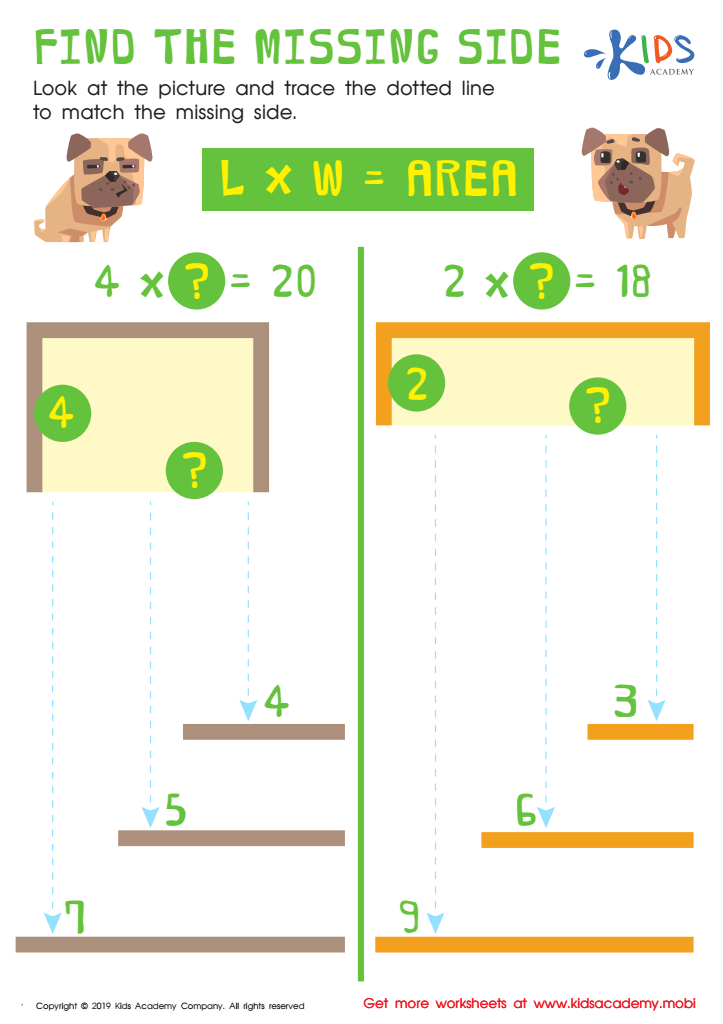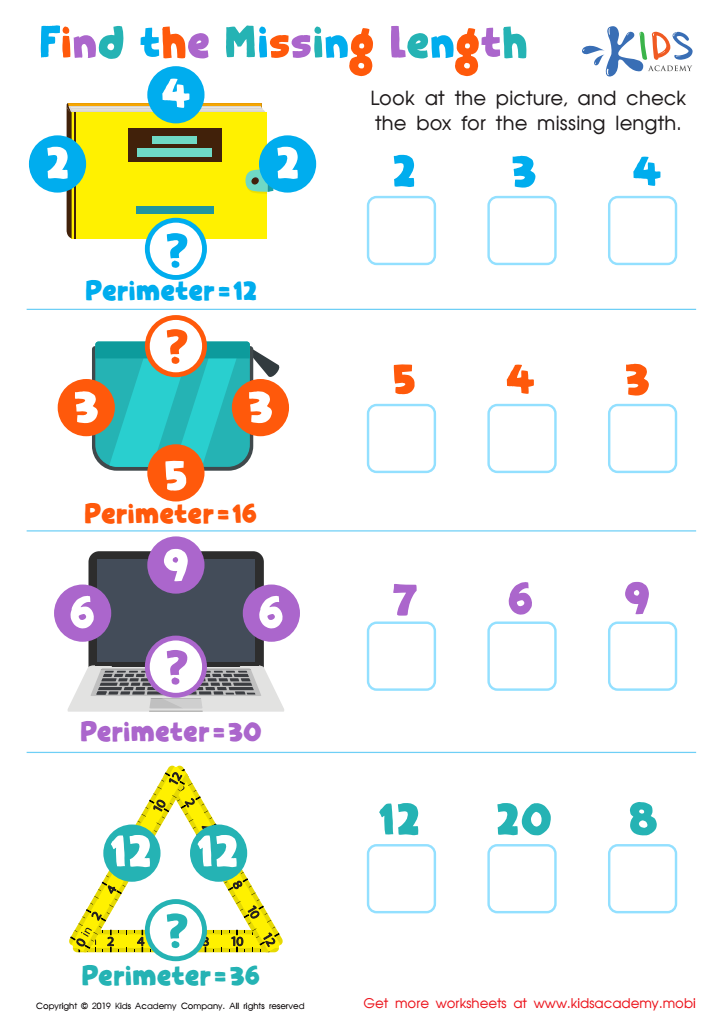Understanding geometry Geometry Worksheets for Ages 3-9
4 filtered results
-
From - To
Welcome to our "Understanding Geometry" worksheets, designed specifically for children aged 3-9. These engaging and interactive resources introduce young learners to fundamental geometric concepts through colorful visuals and stimulating activities. With a focus on shapes, patterns, and spatial awareness, our worksheets help develop essential skills that form the foundation for future mathematical learning. Activities include identifying shapes, tracing lines, and solving simple puzzles, ensuring that children grasp these concepts in a fun and memorable way. Perfect for teachers and parents alike, these worksheets provide valuable tools to nurture a love for geometry and boost confidence in young learners. Explore and discover today!


Golf Maze: Curved and Flat Surfaces Worksheet


Geometry: part 1 Worksheet


Find the Missing Side Worksheet


Find the Missing Length Worksheet
Understanding geometry is crucial for children aged 3-9, as it lays the foundation for essential cognitive skills and real-world applications. For parents and teachers, nurturing this understanding fosters a child's spatial awareness, critical thinking, and problem-solving abilities, which are vital in all areas of learning.
From a young age, children interact with shapes, sizes, and spatial relationships through play and exploration. Activities like building blocks, puzzles, and drawing not only engage children but actively teach them about geometric concepts. Early exposure to geometry helps children develop visual perception and categorization skills, enhancing their ability to interpret and interact with their environment.
Moreover, a solid grasp of geometry supports later scholarly pursuits in math and science. It encourages logical reasoning, as children learn to deduce and solve problems involving shapes and measurements. Engaging parents and teachers in this process creates a collaborative learning environment, where geometry is not just confined to the classroom but is recognized in daily life—think of patterns in nature or geometric patterns in art.
Ultimately, fostering an understanding of geometry equips children with the tools they need for academic success and everyday decision-making, making this an essential focus for both parents and educators.

 Assign to My Students
Assign to My Students
















